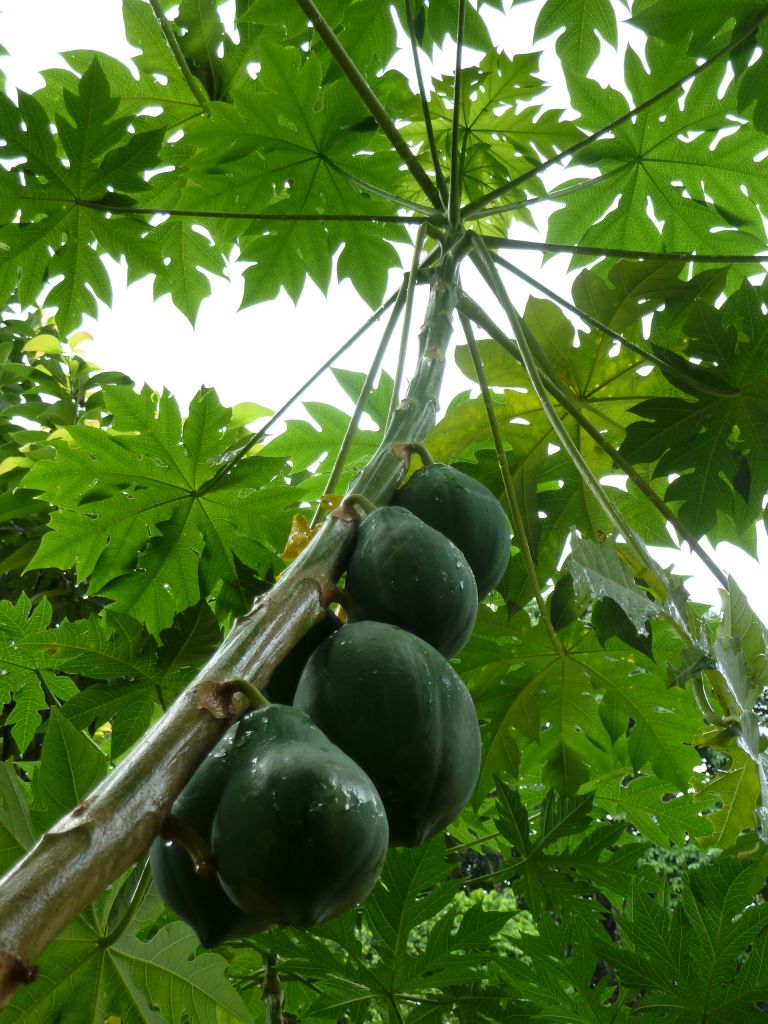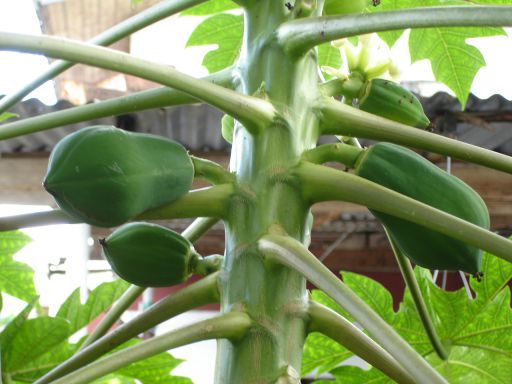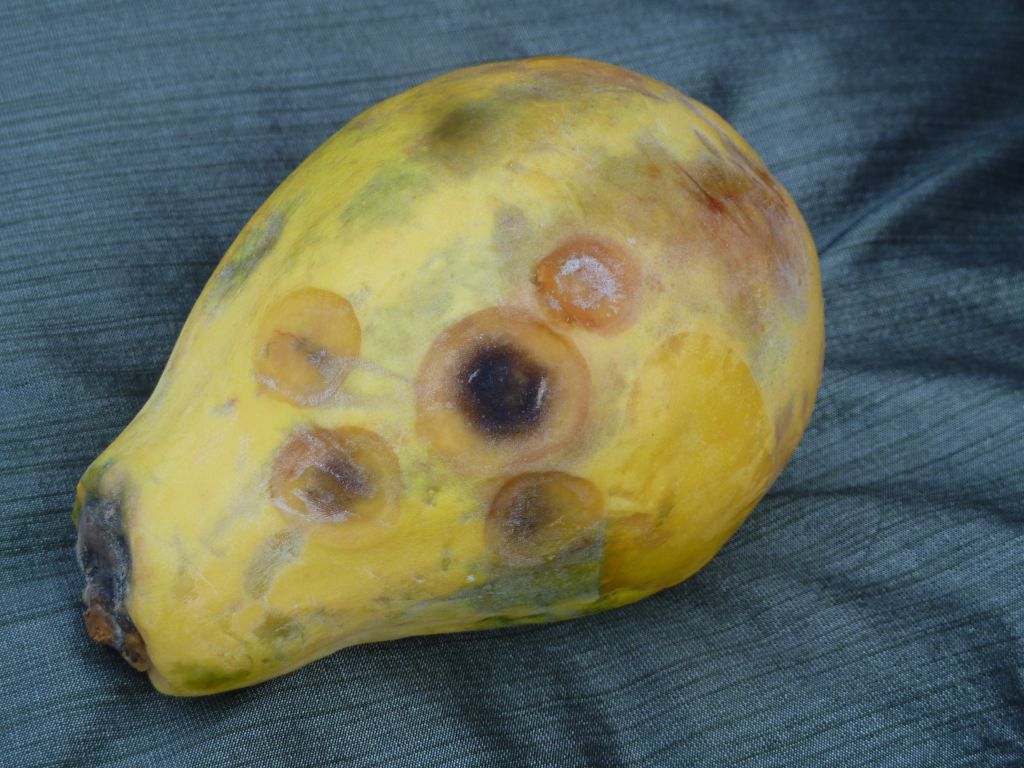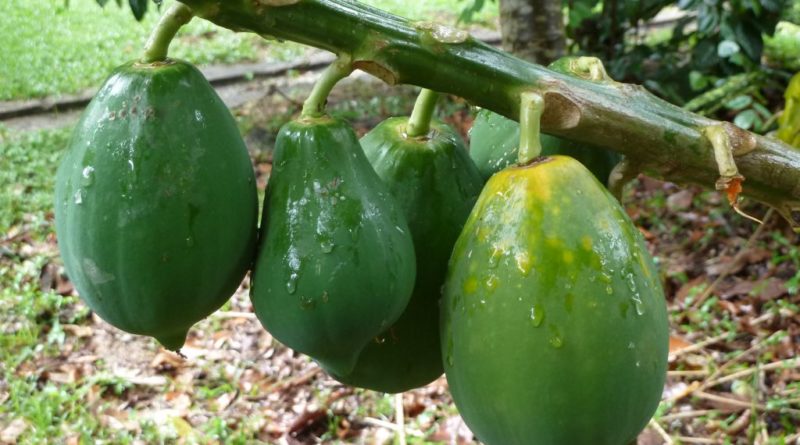Anthracnose disease of papaya and its control By Dr Terry Mabbett
Papaya (Carica papaya) otherwise known as paw-paw is native to Mexico and northern South America but now naturalized and cultivated throughout the tropical and subtropical regions of the world. Papaya is an important crop for both home consumption and export. India with 6 million tonnes is easily the world’s biggest producer with Indonesia, Thailand, Philippines, Bangladesh, Brazil, Mexico and Nigeria amongst the world’s top twenty world producers.
Papaya exhibits several oddities. Two particular peculiarities are papaya plants being dioecious (male and female flowers on separate plants) and also showing cauliflory. This term describes the way in which the flowers, and therefore the fruit, are borne which is directly on the main stem or main branches and also the case for cocoa.
Just as papaya has a ‘global’ distribution as a tropical/sub-tropical fruit crop, anthracnose as the most important disease of papaya and caused by the fungus Colletotrichum gloeosporioides has also assumed a worldwide distribution. And not surprising since the same fungal pathogen causes anthracnose disease in a wide range of other fruit tree crops including mango, avocado, citrus, banana and passion fruit. However, there is strong evidence to suggest that Colletotrichum gloeosporioides exists as individually different biotypes which are host-specific to particular plant and crop species.

Disease symptomology
Anthracnose infects leaves and fruit of papaya but the latter are most severely affected by this disease and progressively so as the fruit matures. Initial symptoms are small and light-colour spots which enlarge to become sunken and with a water-soaked appearance. Individual disease-spots may increase to 5 cm in diameter or merge and coalesce with neighbouring spots to destroy the fruit through a rapid and all-consuming wet disease necrosis.
As the fruit ripens and the disease progresses a mass of pinkish-orange or salmon-coloured fungal spores creates concentric ring patterns in the sunken lesions. Another frequent disease symptom is well-defined reddish-brown, irregular or circular spots about 1–10 mm in diameter and commonly called ‘chocolate spot’. With progressive fruit ripening these ‘chocolate spots’ quickly enlarge to form circular, sunken lesions up to 20 mm in diameter.
Disease epidemiology
Spread of disease and the infection of healthy plants and fruits is heavily dependent on moisture from rainfall and especially when there is free water on the fruit surface and raised humidity. Disease incidence and severity is accordingly highest in those areas where relative humidity and rainfall are high and with atmospheric temperatures conducive to fungal growth and development. Optimum ambient temperature for this pathogen is between 18 and 25°C.
Spores called conidia (singular conidium) produced on structures called acervuli (singular acervulus) are dispersed in water splashes, water droplets and wind-blown rain. In the presence of free water with a minimum relative humidity of 97%, spores landing on immature green papaya will germinate to form germ tubes to effect entry into and infection of the host. Specialized fungal cells called appressoria which form at the ends of the germ tubes generate a sufficiently high pressure to break through the cuticle (layer of lipid material on the epidermis) and epidermal cell layer using a so called ‘penetration peg’ to establish the infection.
The infection remains latent until the post-climacteric stage, a defining stage in fruit development, but as fruit start to ripen thereafter the pathogen resumes growth which manifests in the classic anthracnose disease symptoms. During growth and colonisation of the fruit tissue, the fungus absorbs nutrients to form acervuli and spores and thus completes its life cycle. In tropical and subtropical regions where the growing season is essentially continuous, fungal growth and disease cycle is repetitive. However, in the absence of a host plant the fungus can survive as a saprotroph on dead papaya tissue or other organic matter.

Disease Management
Overall aim of anthracnose disease management in papaya is aimed at managing and minimizing damage and yield loss rather than eradication of the pathogen. Given the widespread distribution of the anthracnose pathogen across a number of different host species eradication is virtually impossible to achieve. Growers should adopt a programme of Integrated Disease Management (IPM) which combines a broad range of cultural and chemical methods each targeted at the most appropriate time and hit the fungus at the correspondingly weakest points in its life cycle.
Site selection – choose planting sites in lower rainfall areas and avoid areas with inherently high humidity due to the presence of standing water.
Cultivar selection – plant cultivars (varieties) of papaya with established resistance or tolerance to anthracnose disease.
Mixed cropping – planting papaya interspersed with non-hosts of such as breadfruit can help to minimize both the incidence and severity of anthracnose disease. Such mixed planting patterns interfere with water splash dispersal of spores to reduce the potential pathogen build up and spread.
Crop sanitation – This involves removal of diseased fruits from the plant and fruits which have already fallen to the ground, to reduce the fungal inoculum load in the papaya field. In addition, the removal of dead leaves, weeds and debris from on and around the trees eliminates the pool of organic matter upon which the pathogen may survive as a saprotroph.
Moisture management – always select a free-draining soil and avoid the presence of standing water which invariably causes the higher humidity levels that aggravates infection and disease development. Similarly increase plant spacing to encourage good air circulation in the crop canopy and rapid drying of fruit surfaces after rainfall, thereby minimizing the build-up of relative humidity in the papaya crop canopy.
Timely fruit harvest – Pick papaya fruits before they over-ripen and fall to the ground. Besides losing crop, these ripe, rotting fruits on the ground will simply add to the spore load in the environment.
Post-harvest disease management –An integrated programme including the use of post-harvest fungicides applied as sprays or dips with or without the use of coatings of food grade wax. Fruits should be stored and shipped in a well-ventilated environment to minimise humidity and at temperatures below 18°C to inhibit disease development. Prompt removal any infected fruits will prevent disease spread within the consignment of fruit.

Fungicide spraying in the field
Application of fungicides will be necessary, indeed essential, in situations where papaya is highly susceptible and prone to anthracnose either due to conditions of climate and weather and/or because the cultivars grown lack disease resistance or tolerance.
A wide range of fungicides have been successfully used against this disease including contact protectant fungicides which remain on the fruit surface to prevent infection, and systemic curative fungicides which enter plant to supress established disease.
Generally speaking it is better to adopt a policy of disease prevention and fruit protection by using contact protectant fungicides and using a good application technique in terms of spray timing and spray coverage. The most widely used and tried and tested fungicides are those which contain copper as the active ingredient. The mainstream copper fungicides in use around the world are tribasic copper sulphate, copper oxychloride, cupric hydroxide and cuprous oxide.
Recommendation for the use of Nordox 75 WG a wettable granule formulation containing cuprous oxide is as follows: start the control programme before the disease appears and apply repeat sprays at 10-14 day intervals. During periods of heavy rainfall reduce spray interval to 5-7 days. Recommended dosage rates are within 3 to 6 kg of fungicide product per hectare with growers advised to use higher rates when conditions favour infection, disease spread and development.
Papaya can’t escape from anthracnose
There’s no escape for papaya from anthracnose. Recently I purchased a perfectly good looking papaya from a UK supermarket in the ‘half-ripe’ condition. I placed the papaya in a sealed polythene bag to hasten ripening which it certainly did. But it also brought out latent infections of anthracnose which would have certainly been there, unseen and unobtrusive, before the fruit was shipped from the South American country where it was grown. The anthracnose disease developed rapidly as sunken, wet and brown lesions on the surface of the fruit. I peeled and sliced up fruit while these disease symptoms were still at the superficial stage and fortunately they had not spoilt the eating experience of the fruit.

